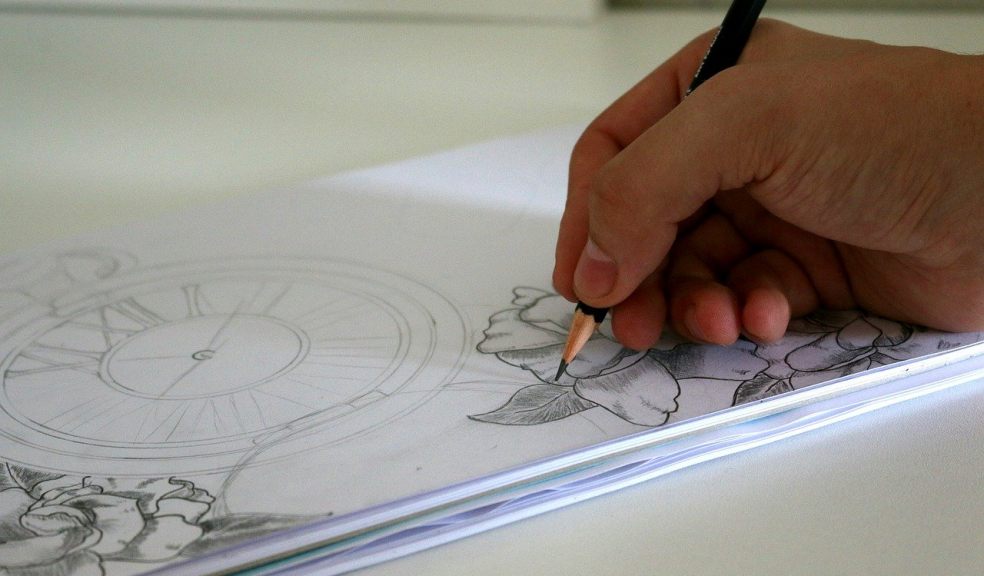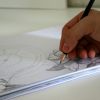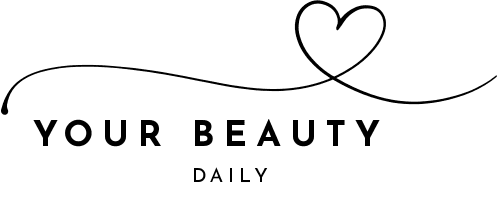
Tools and equipment needed for drawing and painting
Painting is a field of art whose tools and equipment are very expensive and the artist needs special tools and equipment to create a special and beautiful work of art. In this article, we try to talk about different types of paints, brushes, paper, pencils, charcoal and other writing & drawing tools for sketching etc.
One of the important elements of traditional design and painting is "colour" which is seen in the works with pure and bright effects or various combinations. In traditional painting, two terms are used: physical color and spiritual colour. If the paint is applied with a concentration that completely covers the other colors or the background color, it is called physical color, but if the color concentration is low so that after painting, the effects of the background color with the previous colors are still visible, it is called spiritual coloru. For drawing and painting, it is necessary for the designer to be familiar with the use of various tools and accessories for this work. The most important tools to use are:
Pencil: The simplest and most common tool for drawing pencils. The raw material of the pencil, graphite (Graphite) is one of the special forms of the natural crane, and like carbon it has organic matter. This object has a property that leaves a black effect due to contact with different surfaces. Graphite until the 18th-century materials It was originally called Plumbago, or black lead, and the name of the graphite that survives to this day, as far as it is called graphite pencil and lead pencil, is a type of carbon.
And there is Anthracite and Diamond. In the past, it was unprotected, but today it is used to remove graphite impurities and add materials such as clay, wax, or paraffin, and using wood, metal, and plastic protection. To identify a pencil, there are special symbols such as B, HB, F, H, which indicate the characteristics of the pencil in terms of softness, hardness, fat and dryness.
Pencil numbers indicate degrees of opacity and variation in the presentation of the effect left. The types of pencils are as follows:
• Pencil H: H is taken from the first letter of the word hard meaning hard) - Pencil H is hard and light and its numbers are from H to 9H and is used to draw light lines in drawing and so on. As the numbers of this pencil increase, its hardness and lightness increase, until the number 9H, in which compressed carbon (hardly diamond) is used, forms the faintest H pencil. In contrast, pencil B, the higher the numbers, the bolder and softer it becomes and other Office Corporate craft materials.
• F pencil: This is a dry pencil, but it is more colorful than H pencil.
• Pencil B (B is the first letter of the word black meaning black) - is the most suitable pencil for drawing pencil B and there are up to 9B and even 14B.
Pencil B has a very soft, thick, delicate and wide brain. The softer the pencil, the lower and grainy the surface of the paper should be. It should be noted that several pencils can be used in the design.
HB Pencil: HB pencil is used for writing and taking notes, and this type of pencil is soft as well as hard.
Etod Pencil: Etod is a French word, its English equivalent in the sense of student, study and practice; And in general, a lot of practice is drawing and drawing tasks. The Etude pencil is a type of pencil whose body and brain are separated and can be replaced. Its body is made of metal or rubber, and its core is available in the sizes of 1.4, 1- 0.9 - 0.7 - 0.5 - 0.2 mm, and due to its delicacy, it does not need to be shaved, and it can be used for drawing, drawing and taking notes. When working with Etude pencil, it is better to hold it at a 45-degree angle. Explain that there is also a colored Etude pencil.
Conte (Charcoal Pencil): A type of pencil whose core is usually made of relatively oily charcoal, and has a higher degree of opacity than a drawing pencil. Conte pencil, like other pencils, is marked with H and B. This pencil is made of carbon (graphite) and clay. Clay has a warmer effect. When we use each of the carbon pencils with other materials, while maintaining its properties, it also harmonizes with them. A container pencil is usually used with an eraser.
Invisible pencil: Invisible pencil is used to mark the original copies that go to the printing house and no trace of it remains when printed.
Graphite is in the form of large volume pieces and has the ability to create wide surfaces in the design. Graphite is found only as soft (B).
Charcoal: One of the most suitable tools for drawing in charcoal and has a longer history than pencils. Examples are the cave wall paintings of prehistoric times. Early humans used semi-burnt wood, which had been converted to carbon by underground transformations, to design. Although a long time has passed since then, charcoal still retains its value and is used in the design. You can find all supplies and comprehensive teacher resources, on our online shop.
The most common types are fatty charcoal and dry charcoal. Dry charcoal or natural charcoal is obtained from the burnt young branches of hairy, willow, and boxwood trees. The best type is charcoal, which is obtained from indirect heat and has a smooth body without scratches.

















